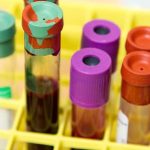Raising Awareness: Von Willebrand Disease
Von Willebrand disease (VWD) is a bleeding disorder that affects roughly one percent of the general population. Von Willebrand disease is a genetic disease, meaning patients get it from their parents.
Here, we take an in-depth look at Von Willebrand disease and cover its causes and side effects as well as give crucial information about how patients can learn to live with it. Whether you have VWD or know someone who does, this article will serve as a comprehensive resource guide to help raise awareness.
What is Von Willebrand disease?
The name of this condition stems from the Von Willebrand factor (VWF), which is a protein structure in the human body. VWF helps blood clotting by binding to another protein, along with blood platelets and creating a platelet plug. Those who have VWD are lacking this factor, which means they have trouble with excessive bleeding. Since the blood cannot clot correctly, it is much harder for the body to heal. VWD is the most common blood disorder in the United States.
There are three types of Von Willebrand Disease. Type 1 affects the majority of patients, and it is also the mildest version. In this case, the individual has roughly 20 to 50 percent of the average person’s clotting capacity.
Type 2 VWD is broken down into four distinct parts. Each segment is based on various factors, including the presence and molecular chains of the Von Willebrand factor. Around 15-30 percent of patients are diagnosed with Type 2, and the symptoms can range from mild to moderate.
Those with Type 3 VWD are in the minority, comprising less than ten percent of the total. In this case, the amount of Von Willebrand factor in the blood is substantially low, so bleeding can occur regularly. Patients with Type 3 can experience spontaneous bleeding within their joints and muscles.
The final type of Von Willebrand Disease is acquired. Usually, the condition is inherited genetically, but some patients can get it from other blood and autoimmune diseases, such as lupus. Also, some heart diseases and cancers can cause VWD, as can some medications.
What are the symptoms of Von Willebrand disease?
Because the blood of someone with VWD cannot clot correctly, the most common symptom is excessive bleeding. Most of the time, the bleeding occurs under specific circumstances, such as during tooth extraction or when getting surgery. Also, some people with VWD may get frequent nosebleeds.
Women tend to have more severe cases of the disease, as the condition can cause a more substantial flow of menstrual blood. It is also harder for women with VWD to heal after giving birth.
Other symptoms of VWD may include bruising or discoloration of the skin or blood in one’s urine or stool. Bruising and nosebleeds can occur without warning, and typically, the bruises will be large and filled with blood. There may also be signs of anemia, such as fatigue and shortness of breath that often occur during menstruation because of a lack of blood.
Causes of Von Willebrand disease
The most widespread cause of VWD is genetic inheritance. Both men and women can pass it on to their children, who can continue the cycle further. In rare cases, VWD can occur because of a genetic mutation. In these cases, neither parent has the disease, but the child develops it abnormally during gestation. In this situation, although the condition was not passed down, the person can still give it to his or her children.
Some medications or secondary diseases can diminish one’s level of the Von Willebrand factor. When this happens, VWD is not passed down to children, as the cause was not genetic. Acquired VWD is extremely rare.
Because genetics is often the mitigating factor for developing this disease, the best way to diagnose VWD is to look at one’s family history. If there is no indication of genetic inheritance, a technician at a hematology clinic can usually determine the specific cause and perform a clotting test to see which type of VWD is present. From there, doctors can determine the best course of treatment.
Treatment options for Von Willebrand disease
Once the severity of the condition is established, patients will usually be prescribed medication to treat VWD. The most common treatment is a drug called desmopressin acetate, or DDAVP. This medication is available as either a nasal spray, injection or tablet. All versions are designed for those with mild symptoms.
DDAVP stimulates the production of the Von Willebrand factor so that the blood can clot correctly. One of the most common side effects is water retention, which can lead to low sodium in the bloodstream. Patients taking DDAVP are highly suggested to follow fluid restriction to avoid the worst consequences.
Another treatment option is an IV infusion of VWF-rich concentrates. These infusions can also sometimes have factor VIII, which is another binding agent in the blood. Sometimes, however, the treatment will only have VWF. Usually, IV drips are given to those with more moderate to severe symptoms, or patients who don’t respond well to DDAVP.
Antifibrinolytic drugs can also be recommended by a doctor, as they will help prevent a breakdown of blood clots. These medications do not create or synthesize VWF specifically, but they can help minimize the disease’s symptoms. In some cases, the doctor may recommend getting an IV infusion to form a clot and then take an antifibrinolytic drug to preserve it.
Finally, birth control pills can help stimulate the creation of both protein factors, so women who are taking them can mitigate some side effects of VWD.
Living with Von Willebrand disease
Fortunately, most individuals with this condition have mild symptoms, so the disease does not significantly impact everyday life. Also, taking a treatment like DDAVP can help minimize the side effects even further, ensuring almost no disruption to one’s lifestyle.
However, for those who have severe symptoms, VWD does not have to create problems. This section highlights some tips and tricks for mitigating risk and living life to the fullest with Von Willebrand Disease.
Visit a hematology clinic for treatment recommendations
Although your doctor may know about VWD, chances are they don’t fully understand how it can impact your body. The best way to ensure you get the right treatment is to visit a hematology treatment center. Because hematologists specialize in blood disorders and diseases, doctors can provide much better insight into your condition. Also, if you need a more precise diagnosis, the professionals at these clinics are trained for that.
Remember that the effects of VWD can shift based on your mood and environmental factors. For example, high-stress situations can cause your VWF levels to go down, so bleeding is more of a risk.
Be prepared when traveling
Pack your VWD treatment before heading out, and check to see if you have enough to last the entire trip. Also, for those with Type 1 VWD, it’s worthwhile to locate any hematology clinics near your destination. This way, you can notify anyone with you about where to go and what to do.
Wear identification at all times
While a medical bracelet may not always be necessary, you should have a card in your purse or wallet that shows you have VWD. This way, if you are involved in an accident or have a serious bleeding episode, doctors and nurses can provide you with the appropriate treatment.
Stay active
In some cases, blood can start to pool in your joints and muscles, leading to pain and fatigue. One of the best ways to avoid this problem is to stay active. Ask your doctor about any recommendations for specific exercises. Avoid anything too strenuous that could cause problems, such as a nosebleed. For example, contact sports are often too dangerous for those with VWD.
Monitor your medication intake
Many pain medications act as blood thinners, which can make your condition worse. Non-steroidal anti-inflammatory drugs (NSAIDs) like Aspirin and Ibuprofen are perfect examples. If you do experience pain, it is much better to use something with acetaminophen instead. Check with your doctor before using any drugs. We recommend creating a list of medicines to avoid for easy reference.
Plan for a heavy menstrual cycle
Women with VWD have more challenges to overcome than men. One of those obstacles is having to use more tampons or pads than is typical. If you know that you have this disease, plan accordingly.
Von Willebrand disease treatment in Raleigh
Overall, Von Willebrand Disease does not have to disrupt your life. It is an easily manageable condition with safe and effective treatment options. If you are concerned about any potential side effects, talk with a hematology specialist for insight and care.
If you or a loved one are living with VWD, Personalized Hematology and Oncology of Wake Forest can help. Our practice combines specialized knowledge with the latest advancements in therapies to achieve the most positive outcomes possible for each of our patients. We provide every patient with personalized care and a customized treatment plan. Contact us today to make an appointment.






